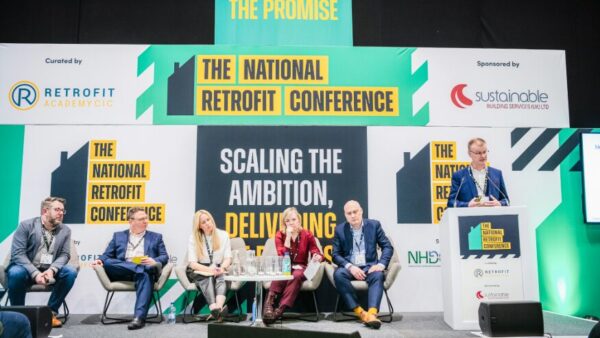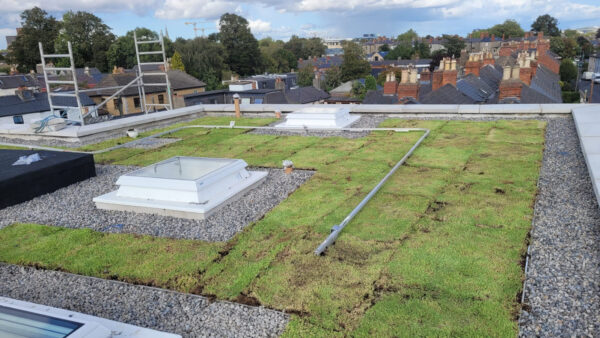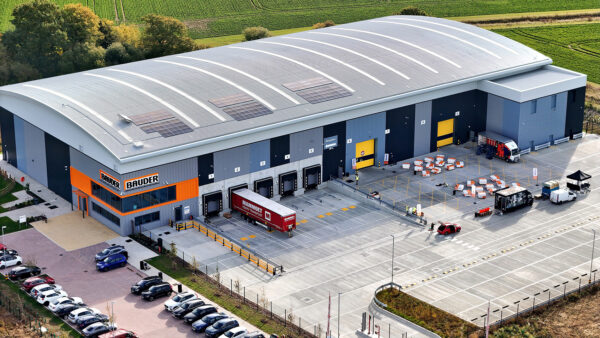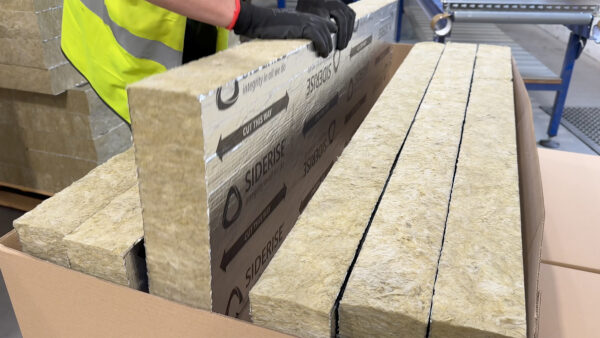
In early 2024, the UK government introduced biodiversity net gain (BNG) legislation to address the ongoing decline in biodiversity caused by urbanisation, infrastructure development, and other human activities.
BNG is a relative improvement approach that ensures habitats for wildlife are left in a measurably enhanced condition compared to their state before development. Bauder green roofs can help meet these BNG requirements.
The mandatory planning condition obligates developers to ensure that their projects result in a measurable net increase in biodiversity. By doing so, the legislation aims to mitigate the adverse environmental impacts of development, ensuring that the natural habitats and ecosystems are not only protected, but enhanced. The introduction of BNG is consistent with global efforts to stop biodiversity loss and safeguard the natural world for future generations.
How to measure biodiversity
A standard biodiversity metric is used to assess the number of units a habitat contains before development, it can then be used to estimate the units needed to replace any habitat loss and achieve a 10% BNG. The value of biodiversity is measured in standardised units assigned based on various habitat factors, including type, size, quality, and location. After development, the assessment is repeated to verify the BNG enhancements.
The landowner is legally obligated to create or enhance the habitat and manage it for a minimum of 30 years to achieve the target condition. Therefore, designers must ensure that the new development meets the required biodiversity units, whilst committing to long-term monitoring and maintenance of the created or enhanced habitats.
Ways to achieve BNG
Developers can achieve BNG in three ways:
- by creating biodiversity onsite,
- if that isn’t fully possible, through a combination of onsite and offsite measures.
- as a last resort, if the developer cannot attain BNG through these means, they must purchase statutory biodiversity credits from the government.
Green roof solutions that support BNG
Green roofs are considered a valuable feature for BNG because they can offer habitat for a range of plant and animal species, whilst also improving air quality and reducing stormwater runoff.
The biodiversity metric 4.0 will value a green roof, assessing it on criteria such as the diversity and abundance of plant species, the presence of nesting opportunities for birds and insects, and the ability to support pollinators.
Having introduced green roof technology to the UK and Ireland over 30 years ago, Bauder is now setting the standard by assisting designers in understanding the impact of green roof systems for their projects to meet the BNG targets. Bauder endeavours to adhere to the Green Roof Organisation (GRO) code of best practice for the UK.
Bauder’s green roof product manager, Chris Roddick, has collaborated extensively with ecologists and landscape architects to ensure that the green roof solutions provided by Bauder meet the biodiversity requirements for this mandatory aspect of planning.

A biodiverse roof is designed to replicate the ecological needs of the local environment. It creates natural habitats that support a diverse range of plants, birds, animals, and invertebrates. Careful design and construction are essential to ensure these habitats align with the local Biodiversity Action Plan (BAP).
Different habitats
Bauder offers a range of green roof solutions that can help projects achieve BNG. The BauderBIODIVERSE green roof comprises a matrix of different habitats including additional aggregate (stone and sand) organic matter (dead wood, site harvested topsoil, and dew ponds), allowing the broadest range of flora and fauna to thrive.
Bauder has collaborated with Buglife, the invertebrate charity, to develop specifications that optimise the ecological potential of green roof areas. The biodiverse vegetation addresses the increasing demand for native species to enhance BREEAM assessment ratings, a biodiversity strategy for Urban Greening Factor (UGF), and BNG.
Bauder’s green roofs combine a finished planting scheme with supportive components and a secure waterproofing system, all covered by a single guarantee. Every green roof project is unique in its requirements.










